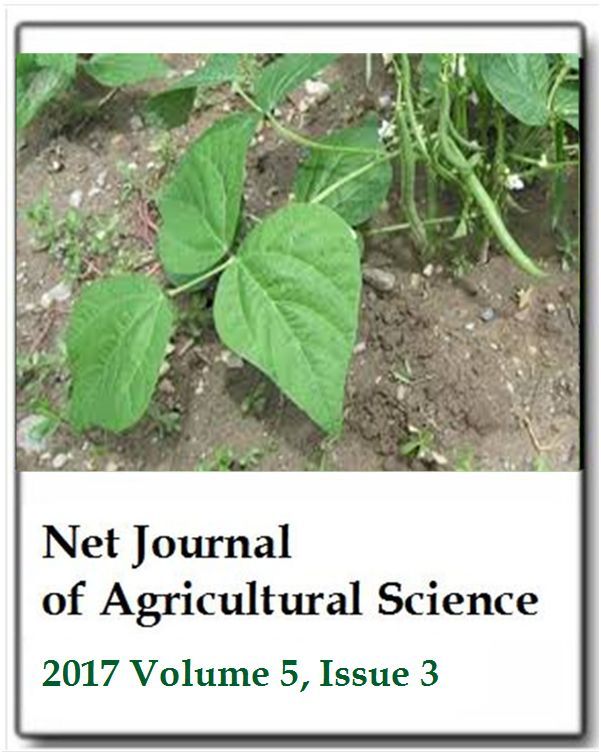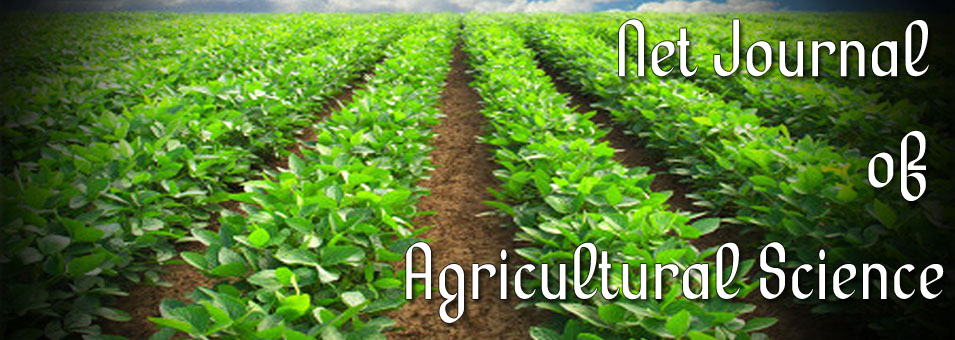Phosphorous use efficiency as affected by phosphorous placement methods and maize genotypes in Arsi Neggele, Ethiopia
Eshetayehu Tefera and Heluf GebrekidanNet Journal of Agricultural Science
Published: August 15 2017
Volume 5, Issue 3
Pages 94-104
Abstract
Placement geometry of phosphorous (P) fertilizer potentially affects plant P use efficiency. Recognizing the virtual effect of placement methods and maize genotype to P absorption, a field experiment employing a split plot design was conducted in Arsi Neggele, Ethiopia to investigate the relative effect of different P placement methods and maize genotypes on available soil P, uptake and apparent recovery of P. The values of Bray-II available soil P showed greater variation due to P placement methods than due to maize genotypes. Though inconsistent across all varieties, grain P uptake response was higher for placement between two seeds (PPD) or row drilling (RD) than point placement at a side (PPS), broadcasting (BC) and no P applied plots (NPP) under the local cultivar. It was also higher for PPD than PPS, BC and NPP under the varieties PHB-3253 and A-511, and was indifferent under the variety BH-540. Similarly, P uptakes in plant and stover plant parts were in most cases superior for PPD and RD than the other placement methods. For genotype by P placement interaction, the highest statistical plant and stover P uptakes values were observed for PPD combined with local cultivar. The same PPD method combined with PHB-3253 and A-511 revealed the most and second most efficient grain P uptakes, respectively. Apparent P recovery also varied from less than zero to 60% due to the effects of the two factors and their interaction with substantial soil and plant P nutritional interrelationship.
Keywords: Maize genotype, phosphorous placement, phosphorous uptake, soil phosphorous.
Full Text PDF
ISSN: 2315-9766
